Ever wonder what ube is, what it tastes like, or how to cook with it yourself? In this guide, I’ll explain everything I know about ube and share some of my absolute favorite ube recipes.

✉️ want to save this?
Have you heard of ube (pronunciation: oo-beh) before? If not, you actually may have seen it online—most likely in a vibrant purple dessert like ube ice cream or ube cake.
Ube is a purple yam native to the Philippines and is grown in tropical areas, mainly Southeast Asia. And in recent years, ube has become increasingly popular throughout the world, especially in the USA.
For example, you can now find specialty ube foods at grocery stores, like ube mochi pancake/waffle mix at Trader Joe’s or ube coconut spread at Target. Amazon even sells ube extracts, powders, and jams. Local eateries like cafés, bakeries, and boba shops are starting to offer ube flavors too, which in my opinion, is so exciting!
As a Filipina American who grew up eating this flavor, I absolutely love love love that ube (and Filipino cuisine in general!) is getting the spotlight it deserves. So, in this guide, I’ll be sharing all that I know about ube with you: what it is, where it’s from, how to use it, and even some of my favorite ube recipes.
💜 Quick Summary
- Ube is a Filipino purple yam that tastes like a mix of vanilla and pistachio.
- Ube is very popular in Filipino desserts like cakes, cookies, and ice cream!
- There are different forms of ube you can buy: fresh ube, frozen ube (mashed, grated, whole pieces), ube powder, ube extract, and premade ube halaya (aka ube jam), which will all be explained below.
Looking for ways to bake with ube? Check out all of my popular ube desserts!
What Is Ube & What Does It Taste Like?
Ube is a vibrant purple yam that is native to the Philippines. Its flavor profile is often compared to a cross between vanilla + pistachio, and is pretty common in desserts like ice cream or cakes.
One of the most popular ways ube is enjoyed is by turning it into ube halaya, aka ube jam. Halaya is made of mashed ube mixed with different milks and sugar, which is cooked down into thick paste. It’s not-too-sweet and is yummy on its own or as a topping/filling in different desserts, like pancakes or macarons. Personally, I like to add halaya right into my cookie doughs or spread it onto toast as a snack.
It’s actually quite difficult to find fresh ube in the USA, so many people (including myself!) rely on buying ube in different forms: frozen, powdered, extract or pre-made jam. These items can be found in the baking aisle of Filipino & Asian grocery stores, or Amazon.
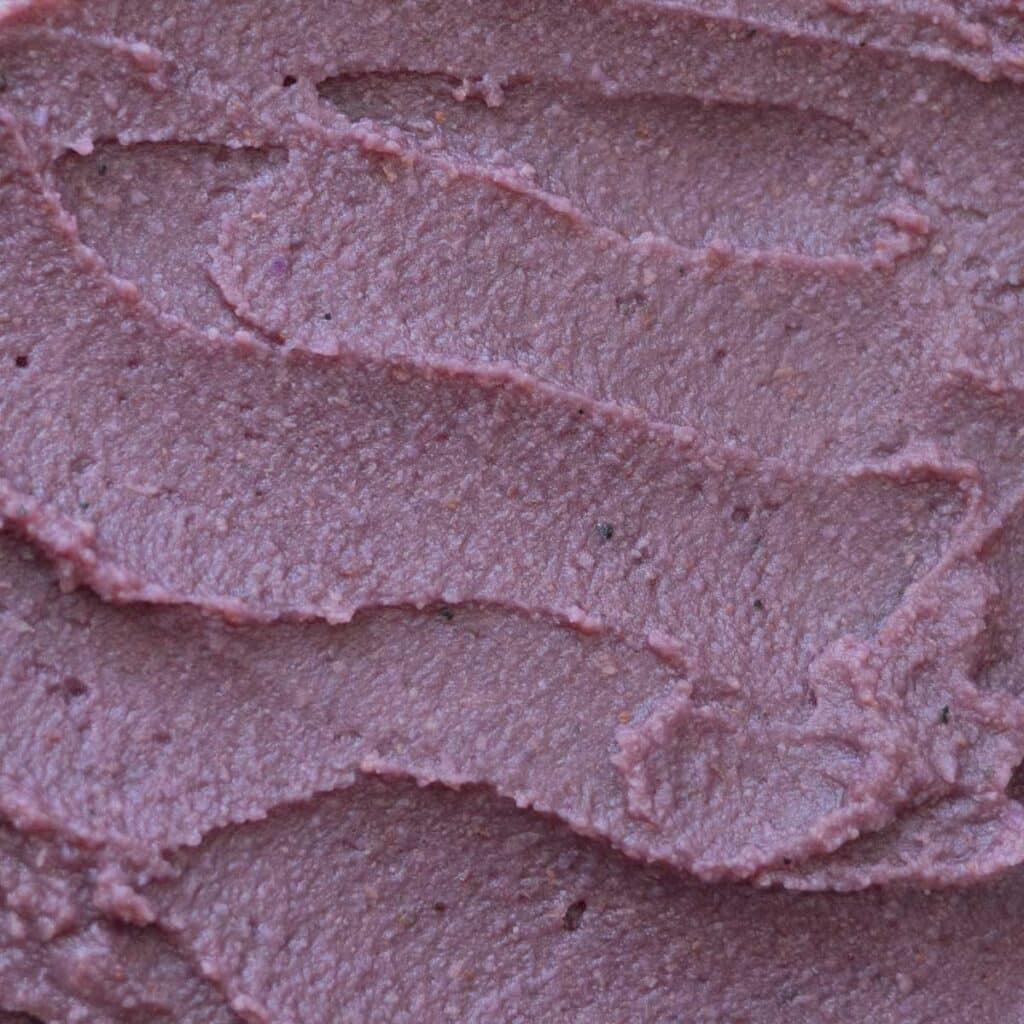
Popular Ube Flavor Pairings
Ube is commonly paired with coconut, (white) chocolate, vanilla, milks, and even cheese! Some other fun flavor pairings include pandan, matcha, guava, and banana.
If you’ve tried pairing ube with other flavors, let me know in the comments! I’d love to hear new combos.
Ube vs Taro vs Okinawan Purple Sweet Potato
Taro is more commonly used in both savory and sweet applications, while ube is usually in desserts. Taro has white flesh with purple specks while ube has purple flesh. Lastly, taro is not as sweet as ube (source).
Okinawan purple sweet potatoes have a similar color and flavor profile to ube, but are slightly drier (source).
Where To Buy Ube Products
You can check to see if your local Filipino or Asian grocery store sells any ube products. You can find frozen ube (mashed, grated, or whole) in the frozen aisle, and ube extract, halaya, and powdered ube in the baking aisle.
If you’re interested in growing ube at home, take note that it’s an invasive species and you need a warm, humid climate for ube to thrive (source). You can check out Rezel Kealoha’s journey on how she grew ube in California and Fleet Farming’s post about growing ube in Florida for tips.
How To Use Different Types Of Ube
In my recipes, I like to use a combination of ube extract AND one of the following: fresh ube, frozen ube, rehydrated ube powder, or ube halaya. Even though the extract provides the signature purple color and oomph of flavor, the other ingredients provide most of the ube taste we’re aiming for.
Fresh Ube
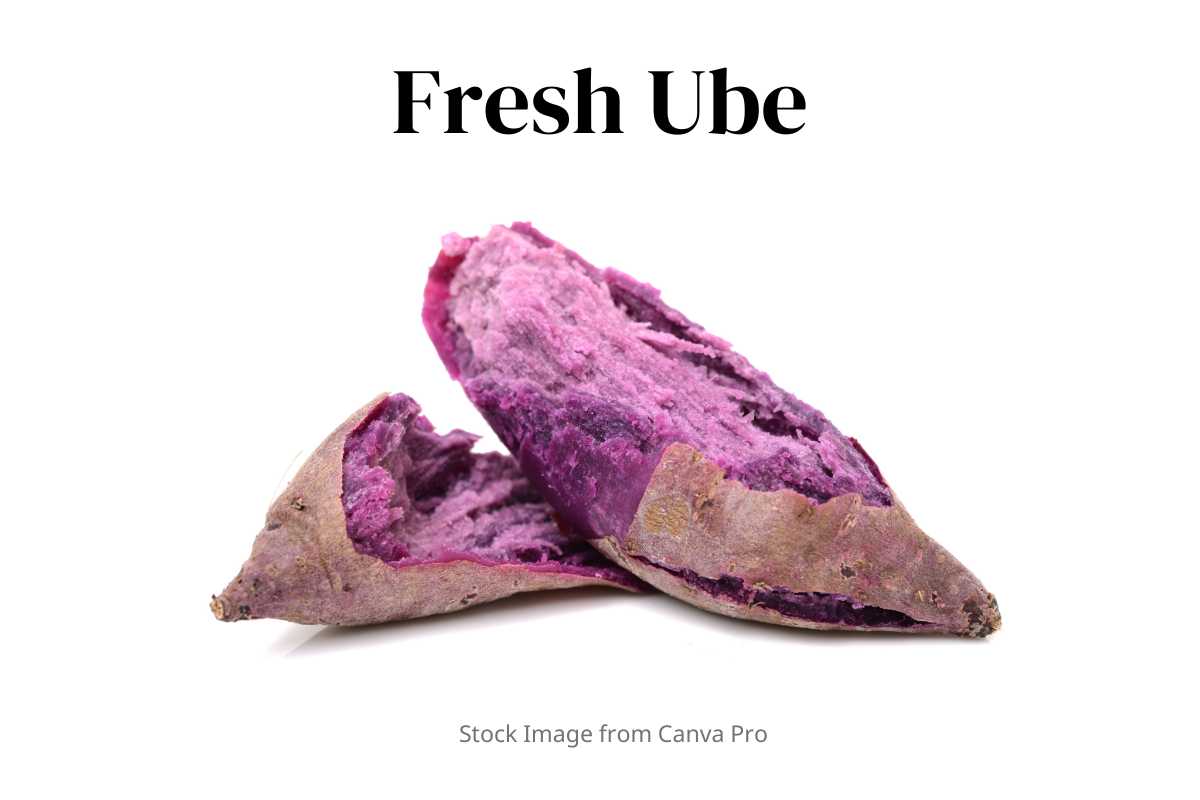
Since fresh, raw ube is pretty difficult to find in the USA, I personally haven’t had the chance to cook it yet! However, cooking ube would be similar to other yam and potato varieties.
Webstaurant shares their recommendation on how to cook fresh ube, which is by washing the skins, boiling for 30-40 minutes, and then using the flesh for your ube recipes. You can also steam, bake, or roast ube.
Frozen Ube
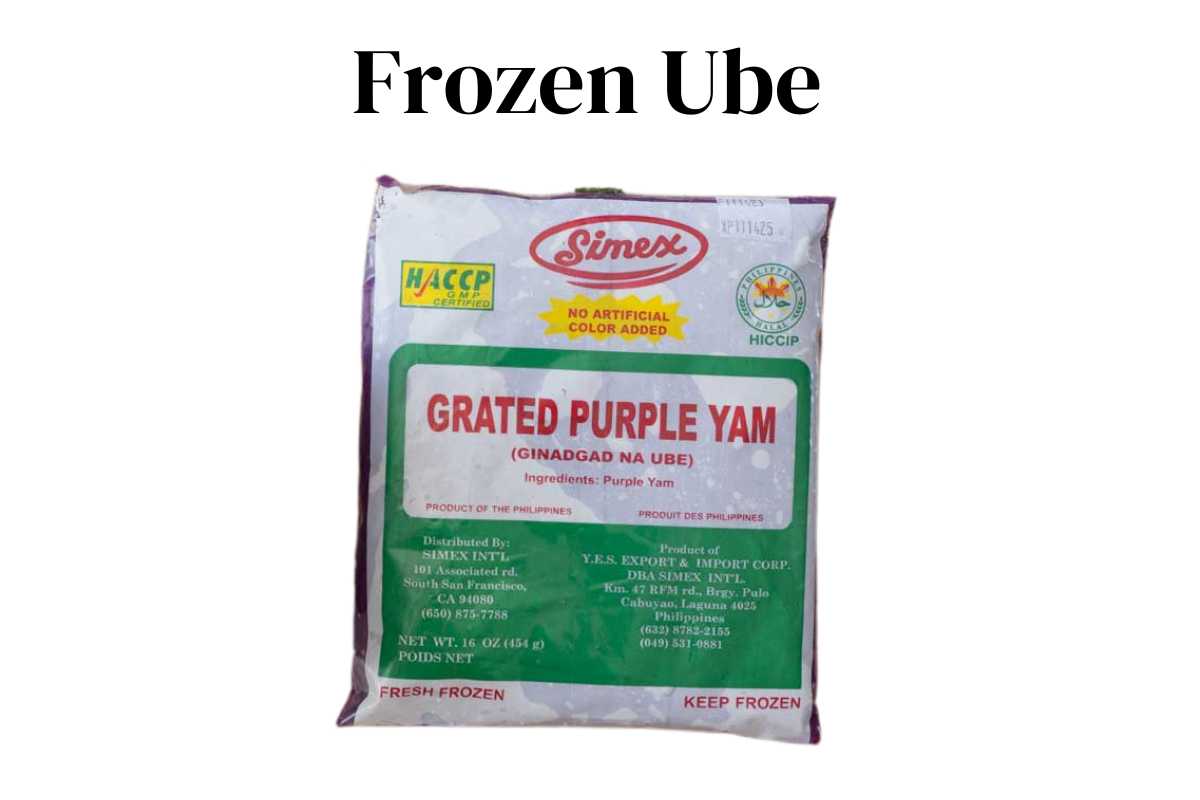
Frozen ube is much easier to find in the USA, especially in Filipino & Asian grocery stores. I would check the freezer section, near other frozen vegetables and fruit.
Frozen ube can come grated, mashed, or in whole pieces. Most of the time, frozen ube is actually already cooked, so you can let it thaw at room temperature and use it in place of freshly cooked ube.
Ube Extract/Flavoring

Ube extract/flavor is one of the most popular ube ingredients out there. It is much more accessible than fresh & frozen ube, and can even be purchased online at Amazon. It is stored at room temperature and has a long shelf life.
Interestingly enough, mainstream ube flavorings—like McCormick and Butterfly—don’t contain actual ube. Instead, they contain “identical ube flavor”: artificial sweet potato flavor with vanilla. This is exactly why they’re called flavors and not extracts. The only extract brand that I have come across that does contain actual ube is Miki’s.
Almost all ube extract/flavor brands contain blue and red artificial coloring, which turns your food purple. The color is pretty strong and gives many ube desserts their signature purple hue. In my recipes, I always like to use a combination of ube extract AND one of the following: fresh ube, frozen ube, rehydrated ube powder, or ube halaya.
The only colorless ube extract/flavor products I have come across are a dyeless version of McCormick ube extract and the brand, Halo Pantry. With Halo Pantry’s products being 100% natural, they are not as potent, so you’ll just need to use a bit more than usual.
Ube Powder
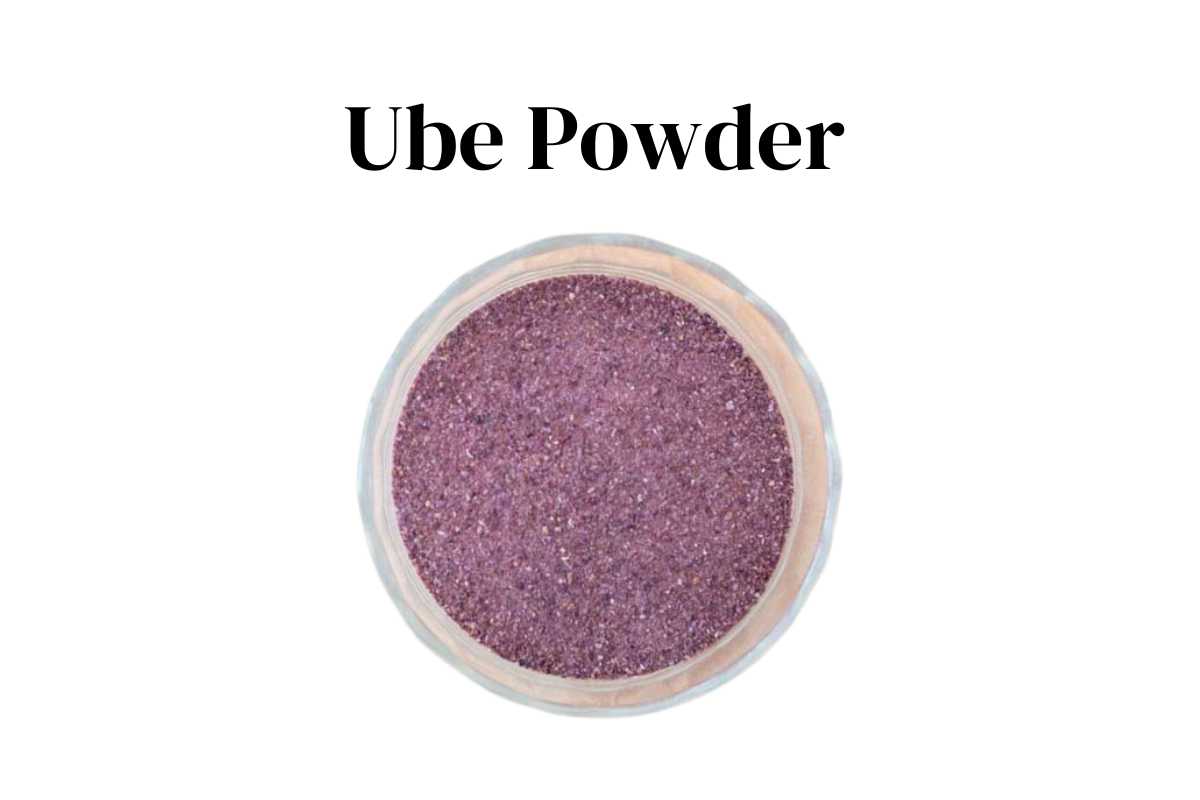
Similarly to ube extract, ube powder is much more common in Filipino and Asian grocery stores, and can also be purchased on Amazon. It is stored at room temperature and has a long shelf life.
I like to rehydrate my ube powder and then treat it as if it is freshly mashed ube. However, there are numerous recipes online that use ube powder as is, like in Constellation Inspiration’s marbled ube cookie recipe.
Ube Halaya

And lastly, there is pre-made ube halaya, also known as ube jam. Halaya is also easily found in the baking aisle of Asian & Filipino grocery stores, and also on Amazon. Once the jar is opened, it must be refrigerated.
Ube halaya is made from cooking mashed ube, milks, and sugars together until you get a thick paste. You can incorporate this in your recipes by adding it to cookie doughs ice creams, and breads, or using it as a topping. I sometimes even like to use it in place of fresh/frozen/rehydrated ube. But since halaya is already sweet, I adjust the amount of granulated or brown sugar in the recipe I’m trying to follow.
If you have access to fresh/frozen ube or ube powder, I highly suggest trying to make your own ube halaya. It’s super delicious homemade and only requires 8 ingredients + 30 minutes! Once you have the homemade version, it’s hard to go back!
🍠 My Favorite Ube Recipes
For more ube recipes, check out my collection of ube desserts!
I hope this ube guide was helpful. If you have any questions, please feel free to leave a comment or email me!


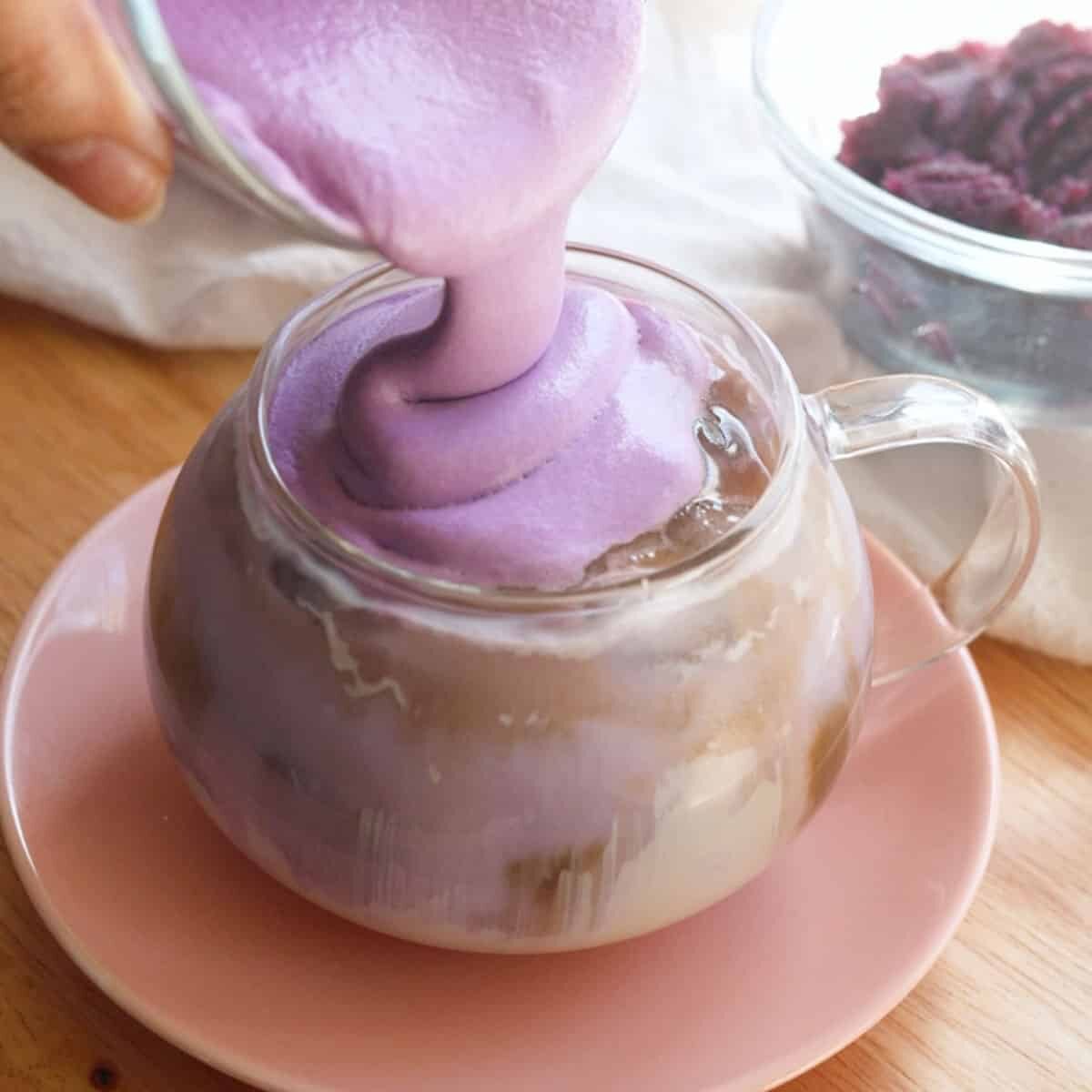

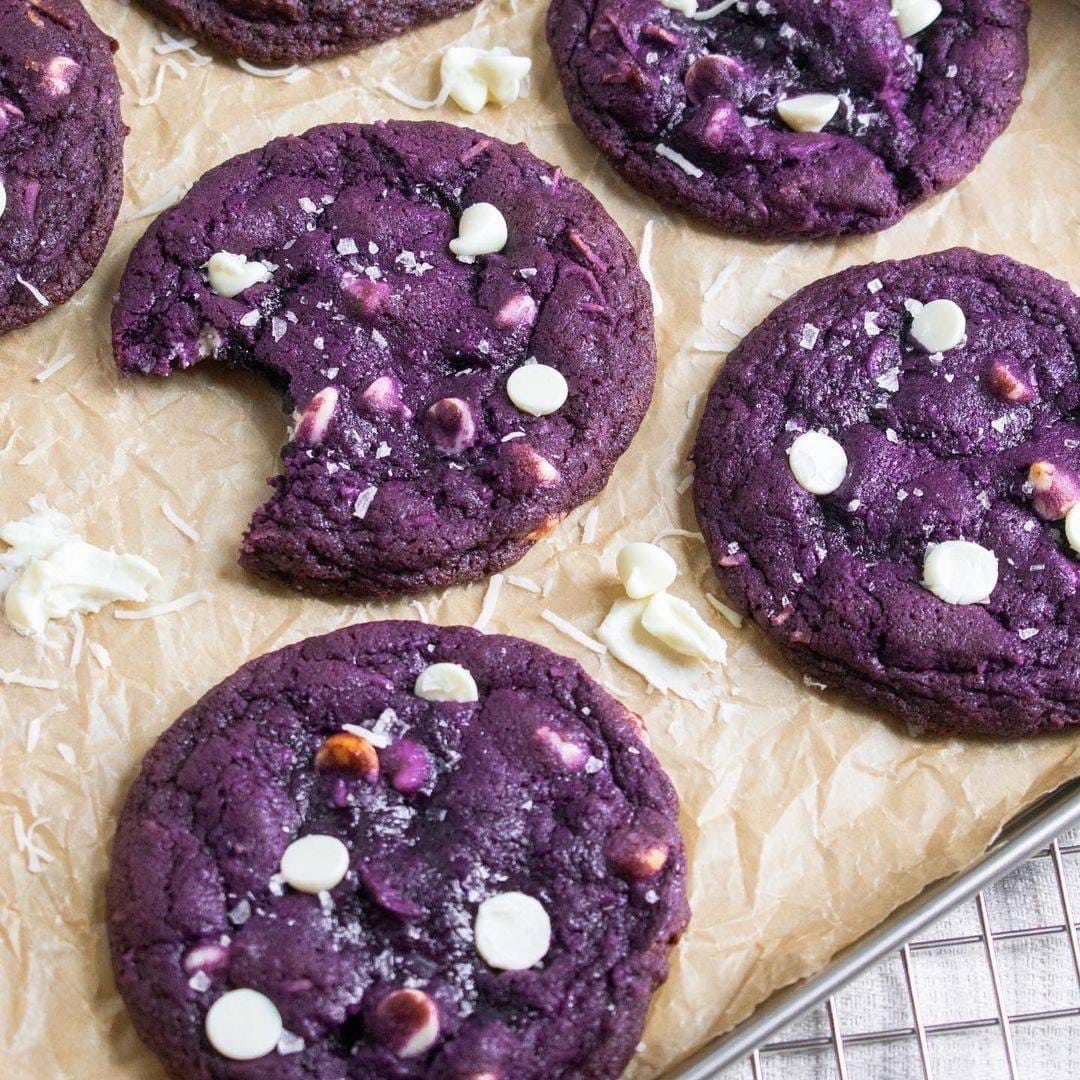
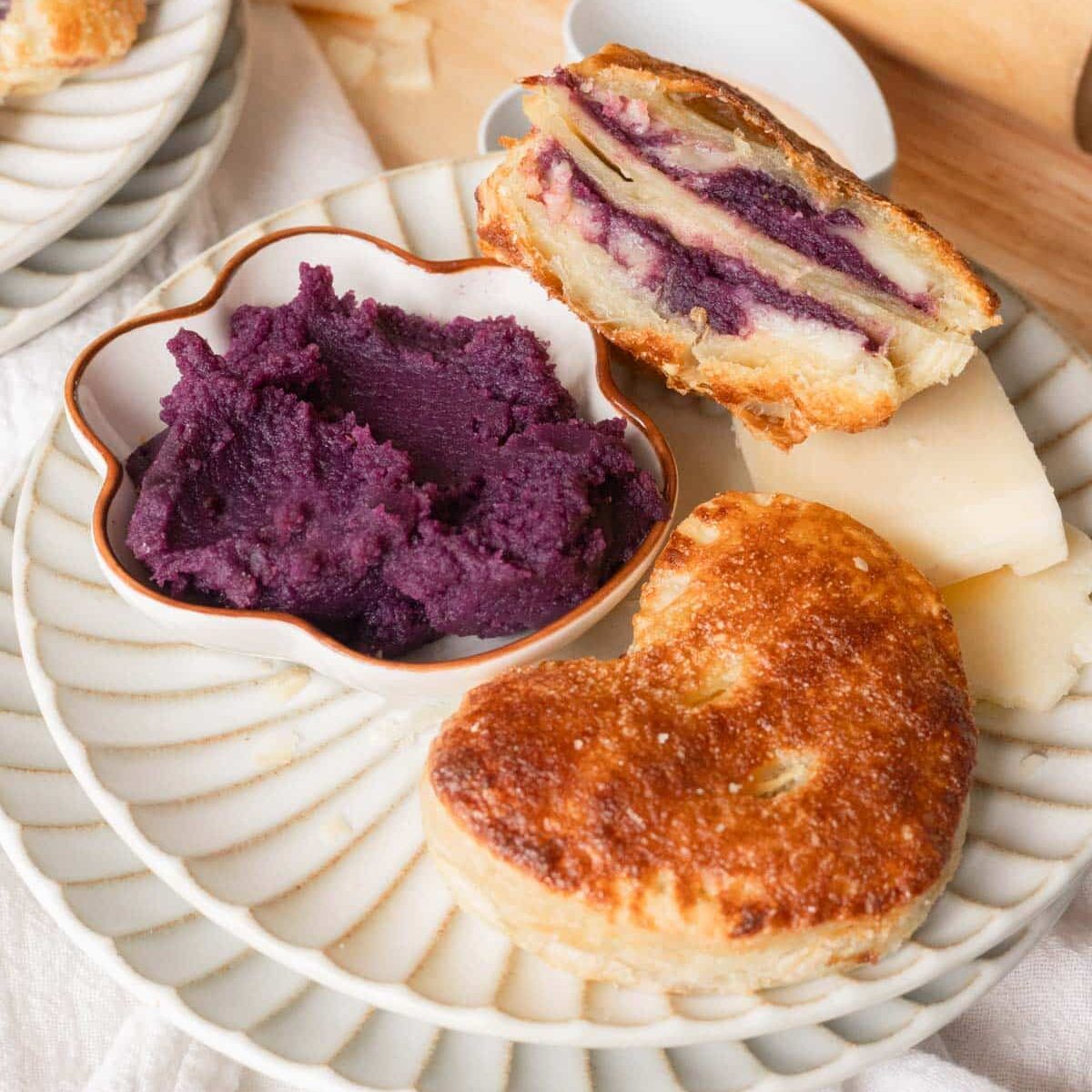
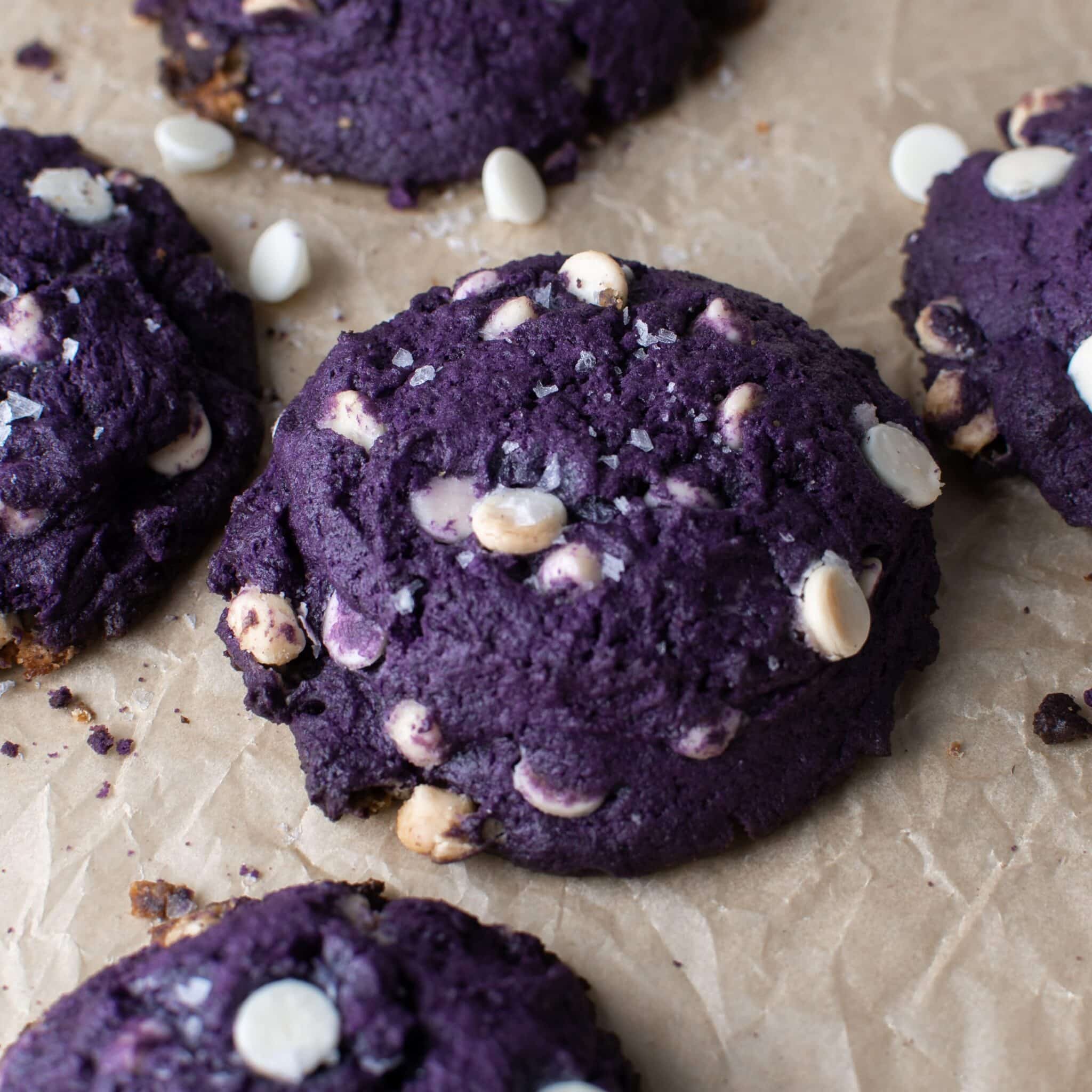

Hello! I love a good ube latte. Do you have any recommendations on how to get that ube flavor in there so I can make them from home? Thank you!
Do you know how to make ube pudding top with match cream? I had it at a restaurant once, but can’t find any recipes
Oooh! Was it just ube pudding with matcha cream? Let me know—I can try to make it! 🙂
I love ube. I have made cookies for everyone and they all loved them. Thanks for all the great tips on ube products. Love your recipes.
Hi Phyllis,
Ube really is such a great flavor! And that makes me so happy to hear 🙂 Thank you for trying my recipes, I hope you have a great rest of your week~